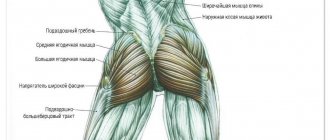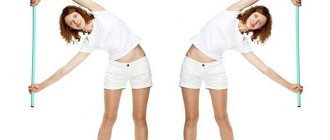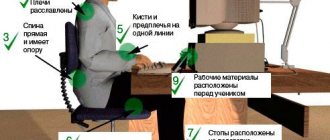Today, almost everyone wants to look slim, fit, and athletic. Overweight affects sedentary people who lead a sedentary lifestyle; poor quality products and poor environmental conditions cause many pathologies. Only a proper diet, as well as moderate physical activity, will help correct the situation. Isometric exercises can be an excellent solution; this is a reliable, effective method of training muscles without stretching them in a static (immobile) position of the joints. Let's take a closer look at what exercises can be considered such, what their advantages are, and at the same time get acquainted with the complexes from various famous athletes.
What are isometric exercises
Unlike the intense training that many are accustomed to, isometric exercises involve constant static muscle tension. That is, without changing your body position, you work your muscles and tendons no worse than with a dynamic load, and sometimes even better. The huge advantage of this way to get stronger is that you don't have to spend a lot of time doing the exercises, and the results will be even better.
When performing dynamic exercises for the chest, back, legs or arms, static work of the body muscles does not occur constantly, and in total it can sometimes reach only 2-3 minutes. per lesson 1-1.5 hours. In the case of static exercises, it’s just the opposite: the time your body tenses is equal to how much you spent on training. To work the muscles for 10 minutes, you will need a little more, taking into account the change of position and preparation.
What it is?
Isometric exercises are exercises performed with maximum effort for a short period of time (6-12 seconds). In plain language, this means that the muscles contract only under the influence of tension, and not amplitude movement. The result of using this complex will be an increase in strength with significant energy savings. This workout works great on the tendons. The famous circus strongman Alexander Zass worked on his tendons to gain his incredible strength. The result of his work was a performance in which he carried an adult horse. This athlete was a pioneer in building training without changing muscle length during tension and without joint movements.

How to do isometric exercises
As before any workout, performing isometric exercises requires pre-warming up or simple exercises. To do this, you can swing your arms, raise your shoulders, bend to the sides, back and forth, and lift on your toes. After you feel the warmth in your body, you can begin the activity itself. General requirements:
- Each exercise should be performed with inhalation.
- All efforts for resistance are made smoothly, gradually. You cannot work with sudden muscle contractions.
- Each approach takes up to 10 seconds, the number of approaches for one exercise is 2-3.
- In general, one workout should take no more than 20 minutes.
- You can train like this at least every day, alternating with dynamics.
- Develop a routine that you will follow every day.

Features of performing static exercises

Before you begin any workout, you need to take into account the general rules so that the exercises are most effective:
- While inhaling, static positions are performed.
- For each exercise, the number of approaches should not be more than 3 times.
- The total training duration is no more than 20 minutes.
- Before exercise, be sure to warm up the muscles, which will help avoid injury to the tendons (this type of injury requires a long recovery), so you need to be extremely careful.
- The duration of each load should be 5 seconds for beginners, and 12 seconds for more experienced athletes.
- During exercise, blood pressure may increase, which is why you should stop exercising if you experience a headache.
- For exercises using the Zass method, a belt, a crossbar, a towel can be used, and it can also be combined with other sets of exercises, which increases the effectiveness of the training several times.
- It is necessary to gradually increase muscle strength until your own maximum capabilities are achieved.
Isometric exercises for the neck
You can perform isometric exercises for the cervical spine absolutely anywhere, even while sitting in the office, which will be especially useful for those who spend most of their time in a sitting position. Static exercises for the face and neck:
- Lying on your back, begin to press the back of your head onto the floor.
- While lying on your stomach, press your forehead onto the floor.
- While sitting at the table, fold your hands in front of you and rest your head on them. Press firmly with your forehead.
- Place your hands in a lock at the back of your head and begin to push, while resisting with your head.
Types of exercises in isometric training
All exercises of the isometric complex can be divided into three categories:
- Pure isometric-static exercises, in which the muscles counteract insurmountable resistance;
- Exercises performed using weights, during which there are pauses of a couple of seconds to create isometric tension;
- Exercises using the maximum possible weights. Their initial phase is isotonic-dynamic in nature, and the main phase is isometric-static.
This isometric training allows you to load your muscles at the right time to achieve maximum effect. This complex will be very useful for the development of muscle groups that are lagging behind in development. To perform this complex, you should make a simple simulator, which every athlete can do independently. It is an iron frame measuring 120x230 centimeters, on both sides of which a pipe can be attached. Although this is not at all necessary, during training you can use any object whose resistance cannot be overcome.
Isometric back exercises
Performing isometric exercises for the back will help not only strengthen it, but also straighten your posture, because gymnastics is aimed at both the rectus and latissimus muscles. Isometric training in several options:
- Lying on your stomach, move your arms back and press them along your body or fold them into a lock at the back of your head. Raise your legs and shoulders up, while tensing strongly. Freeze, count down 5-6 seconds.
- Starting position, as in the previous paragraph. Raise only your shoulders, your legs pressed firmly to the floor.
- Starting position from point 1. Lift your legs off the floor by 10-15 cm, shoulders pressed tightly to the floor.
- While standing, imitate pressing your fists on the sides of your thighs.
- The same as in point 4, only pressure is applied to the front of the thighs.

- Autoimmune diseases
- Treatment of kidneys with folk remedies at home. How to treat kidneys at home
- Eggplants with tomatoes and garlic for the winter - preparation. Recipes for eggplant salads for the winter with photos
Less than 30 days
We all want to be healthy and happy. If you are in good shape and your muscles are toned, you will feel much better and vital energy will fill you, and if necessary, you will be able to protect yourself and your loved ones. But modern people are often under time pressure and do not always have time to visit the gym and train for many hours. Isometric exercises are suitable for home use, take very little time and the effect is immediate. In this article you will learn how to become an order of magnitude stronger than you are now in 10 minutes a day.
Isometric exercises are exercises in which your body is tense for several seconds. These are static exercises during which you do not make movements, but your muscles contract as a result of counteracting the resistance of some object, and you fix this position for some time.
These exercises were used in his training by Alexander Ivanovich Zass (known to many as Iron Samson or simply Samson), who was awarded the title “The Strongest Man on Earth.” Samson, weighing no more than 75 kilograms, could lift a horse. During his circus career, he carried two lions on stage at once in a special yoke. This man with amazing strength became the founder of isometric exercises.
Benefits of isometric exercises:
Save time. During an hour-long gym workout, you spend a lot of time resting between sets and between exercises. As a result, the total time your muscles actually “work” is significantly less than the training time. In the case of isometric exercises, you achieve the same muscle “work” time with a shorter workout.
Availability. To strengthen your body with isometric exercises, all you need is desire and a chain (a thick towel or something else that you cannot tear with your hands).
Fast recovery. After a full workout in the gym, you need 24-48 hours for full recovery. In some cases, it will take even longer for muscle pain to subside. With isometric exercises, muscle tissue is not damaged as much: you can train regularly and progress quickly.
I remind you that before doing any physical exercise, you need to warm up to avoid injury. Don't forget about it!
Exercises:
Exercise 1: Plank
The most popular isometric exercise. It will help strengthen your core and shoulder muscles. It is no coincidence that the plank comes first on this list: if you have five free minutes and a couple of free square meters on the floor, be sure to do this exercise, and you will feel all its benefits very soon. There are a huge number of variations for performing this exercise; in this article we will consider only three types of planks: on straight arms, on the elbows and a side plank.
For a straight-arm plank, you need to take a prone position so that your body forms a straight line from your heels to the top of your head. Don't bend over and try to hold this position for as long as possible. Over time, increase the duration of the exercise.
The elbow plank is performed in the same way, only your forearms will serve as support for you.
For a side plank, you need to lie on your side, then rise up on one hand and lean on it (or forearm). Raise your pelvis so that your body forms a straight line.
For maximum effectiveness, combine different variations of the exercise. You can do one approach to the limit or several approaches - whichever you prefer.
Exercise 2
Take your towel by both ends and pull it out at chest level. Try to stretch the towel. Your maximum effort will only last a matter of seconds, but that's enough. Rest a little and make another attempt to rip your towel. This is a great workout for the latissimus dorsi muscles.
Exercise 3
The towel should be behind your back. This time you will try to break it by moving your hands forward. A few seconds of extreme effort, and then a new approach. The exercise targets the pectoral muscles and triceps.
Exercise 4
You don't even need a towel for this. Elbows to the sides, hands at chest level. Put your palms together. Start squeezing them, as if trying to move one hand with the other. This exercise will make your arms stronger.
Exercise 5
Stand on the middle of your towel with your feet. It is very important that both ends are the same length. Grab the edges and straighten up. Press your elbows towards your body. Try pulling the ends of the towel towards your chest. This will make your biceps stronger. For maximum effect, try to do this movement in isolation, without using other muscles.
Exercise 6
Stand in the doorway. Place your arms straight up. Without bending your arms, apply pressure to the top of the opening.
Bonus! If you cannot spare even five to ten minutes for home exercises, you can do them right at your workplace, at the institute, or anywhere else.
Exercise 7
It can be done during a lecture. Grab the seat and try to lift it. Unless you're Baron Munchausen, you won't be able to lift the seat you're sitting on, but your muscles will get the workout they need. Mainly biceps and trapezius.
Exercise 8
We also perform it while sitting. You should try to spread your legs, but at the same time use your hands to prevent this. This self-resistance exercise will strengthen your biceps, shoulders, and thighs.
If you wish, you can come up with a huge number of similar exercises yourself, following the same principles of isometric training.
Principles of successful training:
Regularity. As mentioned above, isometric exercises do not require a huge amount of time to restore muscle tissue. Make it a habit to exercise regularly and avoid frequent skipping. Decide right now how many times a week you are going to do isometric exercises and stick to that plan. Start keeping a training diary or create a checklist in which you will mark the days when you completed a set of exercises.
Motivation. Determine why you are going to do these exercises. Without a clear understanding of your goals, you will not be able to achieve them. If the plank in the morning is a punishment for you, and not a step to a better self, then the effect of isometric exercises will be weak. On the contrary, if you are motivated, the results and positive effects from training will not take long to arrive. Imagine yourself after a month (year) of doing the exercises. This is an improved version of you. Become her.
Technique and quality of execution. Make sure you do the exercises correctly. It is best to perform them in front of a mirror, at least at first. Then you will see all the shortcomings of your exercise and will be able to correct them. Incorrect technique can lead to injury, so be sure to pay attention to this.
Breath. All isometric exercises are performed while inhaling. You take a deep breath, then your utmost effort comes, and then you exhale. Pay close attention to your breathing, this is also of great importance.
Nutrition. The destruction of muscle tissue during isometric exercises is not as intense, but it still occurs. Add more protein foods to your diet and start eating healthy. Your body will thank you.
Mode. Just like nutrition, this is a universal, but very significant principle. Follow the correct daily routine and be sure to get enough sleep.
If you already have experience training with isometric exercises, write in the comments! Share exercises and results. Tell us about your experience, the positive effects and the impact of isometric exercises and sports in general on your life. Perhaps your story will motivate someone to start training and become better.
These exercises will tone your business in a short time, you will become more energetic and stronger. Your efficiency will increase and you will feel much better.
And in our Library you can read a review of the book by Shri B.K.S. Iyengar's "Tree of Yoga". From our review you will learn what yoga really is, and how to improve your health and improve brain function with the help of yogic exercises.
Source
Share
Isometric leg exercises
Like gymnastics for the neck, isometric exercises for the legs can be safely performed anywhere. Most of them occur while standing or sitting. Isometric gymnastics for leg muscles:
- Stand up straight, tense all the muscles in your legs. Do 3-4 sets of 10 seconds.
- Place your feet shoulder-width apart, bend and imitate spreading, resisting with your thigh muscles.
- A similar position, but on the contrary, you need to try to bring your legs together.
- While sitting on a chair, try to straighten your legs.
- The same position, only your feet need to be rested against an obstacle, such as a wall. Try to straighten your legs.
How to make beautiful arm lines - static exercise for losing weight on arms
The purpose of static gymnastic exercises is the correct distribution of energy throughout the body, and they are very useful for sedentary work. You can also choose a static exercise for losing weight in your arms, since it is loads of this kind that contribute to the replacement of fatty tissue with muscle mass.
When performing static exercises, only a person’s own weight is used, so there is no particular need to do a long warm-up or use a warming ointment before starting work.
For the exercises to have the desired effect, you need to hold in the desired position for several seconds, then rest for a minute or two and start working again. Perform 7-10 of these approaches at a time to achieve noticeable results.
Usually, after just a few seconds of being in a certain tense position, the muscles begin to burn slightly, this is a signal to relax and take a break for a couple of minutes.
An important simulator for static exercises remains the human imagination. You can use ready-made exercises designed for each part of the body, but you can come up with your own that will work just as well. If the goal is to lose weight in your hands, each person himself knows well the specifics of his lifestyle and the ability to strain certain muscles to achieve the desired goal.
Static exercises are good precisely because you can influence the necessary areas of the body almost in isolation. Having figured out how the necessary arm muscles are tensed, you can exercise almost anywhere and in addition to any activities, without using additional objects. At the same time, like all other exercises, static exercises, in addition to their advantages, also have some disadvantages.
The main goal of performing any gymnastic exercise is to achieve balance and calm, which are necessary for good health. Static exercises require internal concentration and conscious load, which is necessary to control joints and muscles.
If a person needs to reduce body weight, static exercises are an excellent way to achieve the goal. And if the static exercises performed are performed more than half-heartedly, a lot of white muscle fibers are included in the work, which can further develop strength and increase muscle volume.
Advice!
One of the main features of the static work of the human body, which should not be forgotten, is a decrease in muscle flexibility.
Due to static work, the muscles do not stretch or contract, and their length also remains unchanged.
Despite this, regular static exercises help develop capillaries and red muscle fibers, which helps burn fat quickly and effectively. It's also a great way to keep your body toned with virtually no effort.
When doing exclusively static exercises, you need to additionally do stretching of the muscles that are being trained. These two types of exercises help keep the body in good physical shape. Power asanas shown in yoga are good static exercises.
Different thoughts are subject to different loads when performing exercises, and at the same time dynamic and static processes can occur in the body. As a rule, different types of muscles are responsible for them - red and white, and during static training, red ones are used, since they have greater endurance compared to white ones.
To work for endurance, it is necessary to train the red muscles with static exercises. During training, the number of capillaries around them increases, delivering more oxygen than usual. When performing static exercises, high tension should be avoided, as the capillaries are pinched and the flow of oxygen is stopped, which can aggravate the load on the heart.
Isometric abdominal exercises
An excellent gymnastics for women at home that will help get rid of belly fat is isometric abdominal exercises. The process does not require much time at all, and the result due to such statics will not be long in coming. No amount of strength training can compare with these simple but effective loads:
- Sit at a table, place your hands in front of you and begin to press down on the tabletop, while tensing your abs strongly.
- While standing, begin performing delayed crunches, counting 5-6 seconds on each side.
- Lying on your back, bend your knees (90 degrees) and lift your shoulder blades off the floor. It is best to extend your arms forward.
- Lying crunch. At the same time, the legs are bent and standing on the floor, hands are locked behind the back of the head. On each side – 5-6 seconds in static mode.
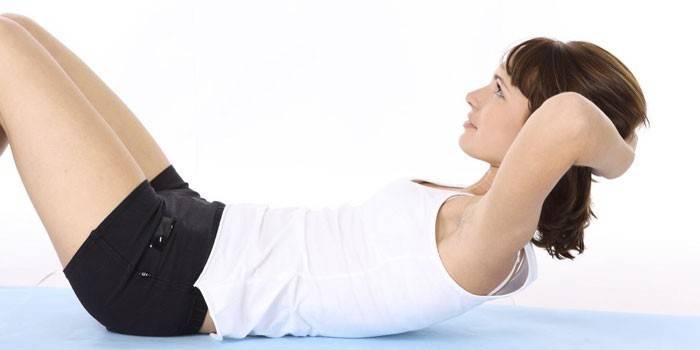
The importance of the abdominal muscles
Even as children, testing each other's abs, we showed respect to those whose muscles could withstand the blow. And now it is very important for every athlete and fitness enthusiast to have six-pack abs. And to get them, people go on diets, go to gyms, and go on a treadmill. However, there are more acceptable loads and exercises for the abs. All kinds of lifts of the torso and legs, twisting are great for working on yourself. Plus it won't take too much time. They only require consistency in execution. The best way to get six-pack is considered to be isometric abdominal exercises. Daily isometric exercises will keep your body fit, even if you lead a sedentary lifestyle. Exercises for the abdominal muscles against the background of a lack of amplitude will help you develop strength and achieve perfect abs. So, it’s worth talking about what isometric gymnastics is, the exercises of which will be described below.
Isometric exercises for arms
Who doesn't dream of beautiful arms or shoulders? You can achieve this with the help of power loads and dumbbells, or use isometric exercises for the arms of Alexander Zass, who actually founded this unique training system and proved its effectiveness by his own example. It was not for nothing that he was also called “Iron Samson”: this man could easily lift a horse on himself, and all thanks to only static loads. Favorite Zass exercises for arms and shoulders (can be performed with a rope or belt):
- Place your hands on the doorway and begin to move it apart. The muscles of the shoulders and arms will become very tense. Hold this for up to 7 seconds. Repeat 2 more approaches.
- The arms are wrapped in a chain and bent in front of the chest, elbows at shoulder level. Using the strength of your chest, shoulders and arms, begin to break the chain, as it were.
- Raise your arms with the chain above your head, and then try to spread your arms to the sides.
- Place the chain behind your back and then use your hands to try to break the chain.
Types of isometric exercises and methods of performing them
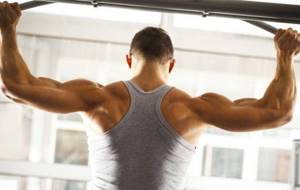
Once you have defined and understood exactly how it works, as well as what benefits it can bring, it remains to figure out how to practice it. The main ones are the deadlift, bench press, and squat. Just by doing them you can achieve significant results. But usually they also add shoulder lifts and toe lifts. All isometric exercises can be divided into three main subgroups.
- Isometric-static. They are aimed at developing muscle tension in its purest form. For example, when you resist an effort that cannot be overcome.
- With weights. In this case, movements are performed with periodic stops. It is precisely during moments of immobilization that the very necessary muscle tension is created.
- With the maximum possible burden. This is a kind of combination of isometric-dynamic movements, in which they stop at the most effective phase of the movement, and the position is fixed.
With the help of such loads, you can achieve the desired effect of static muscle tension. Usually, in this way, experienced athletes pump up muscles that normally remain unused and therefore seriously lag behind in development. For such classes, a simulator was specially developed - a frame with a fixed tube. However, you can do without it by using an arbitrary object that has a rigid fastening.
Bob Hoffman's set of exercises
At the beginning of the last century, a famous trainer wrote a book called “One Minute Every Day for Endurance, Strength and Health.” In it, he collected exactly twelve static exercises that do not require additional equipment. It is recommended to use a regular door frame as a static object here. Alternatively, you can simply lean on the wall. It only takes 1-2 minutes for the exercise to be considered completed.
- Stand facing the door, keep your head straight, back straight. The arms are slightly bent at the elbows, resting on the top bar. Press your palms against the door frame for the required amount of time.
- Squat down slightly without removing your hands from the top bar. Now the force should be directed upward, not forward, while keeping your arms straight.
- Rise up on your toes, as high as possible. Hold the position for six seconds. Return to the starting position.
- Stand with your back to the wall, resting the back of your head against it, place your hands on your waist, feet shoulder-width apart. Do not throw your head back; for convenience, you can place a folded towel. Press the back of your head against the wall as long as possible.
- Turn your face to the wall, placing something soft under your forehead. Repeat the pressure in this position. It is important not to bend your back or twist your neck.
- Bring your hands together in front of your chest. You can clasp your fingers for convenience. Press one palm onto the other with maximum effort.
- Repeat the same thing, only connecting your hands only at the fingers.
- Stand facing the doorway, rest your palms on the side slats or trim, if any. Press down firmly on the jamb and secure the position.
- Repeat the first exercise, but perform it alternately with your right and left hands.
- Secure any object to the frame, and then pull it down with both hands.
- Sit on the floor, rest your feet on the vertical parts of the doorframe. When changing the angle, press with force.
There is no need to overwork too much. 5-6 seconds are enough to feel the tension and also get the effect of the exercise. This complex can be safely used either separately or together with strength or cardio training. Many bodybuilders and bodybuilders use it as an additional leisure activity.
Samson's isometric exercise system
Another name for such a complex is the method of the wrestler and athlete Alexander Zass, who bore the nickname Iron Samson. He believed that strength lies not in muscles, but in tendons, and he was right in many ways. Therefore, he easily defeated opponents in the ring, tied flirty bows from iron reinforcement and bent horseshoes and nails like cotton wool. His original system of isometric exercises involves the use of special chains with hooks and handles at the ends.
- Place your feet wider than your shoulders, shift your weight to your left leg, and straighten your arm on the same side along your body, holding one end of the chain in it. With your right half-bent hand, pull the other end of the chain. Change position, repeat the same on the other side.
- Grab the ends of the chain so that they are shoulder-width apart or even slightly wider. Raise them above your head. You need to pull with equal force in different directions so that not only the arm muscles work, but also the sternum, and at the same time the latissimus dorsi muscles.
- Stretch the chain in front of your chest, while pulling in different directions, that is, your arms should cross.
- * Pass the chain behind your back, just in the area of your shoulder blades. Pull it with half-bent arms to mainly tense your triceps. The muscles of the chest and abdominals are worked out at the same time.
- Wrap the chain around your chest. Standing straight, without bending, try to break your improvised shackles.
- Attach the chains with loops to your feet, or the easiest way is to stand on the chain, stretching it under your feet, straight posture, arms extended along the body. Pull the chain up, contracting your arms and trapezius.
- Take the chain “diagonally”, that is, raise one hand and lower the other. Stretch it for the required time, and then change the location of the limbs, repeat the exercise again.
- With one foot slightly forward, hook the chain on your foot or simply step on it, leaning with your whole weight. Pull the equipment up with your hand bent at the elbow, your palm should also “look” up.
- Squat down slightly with your legs bent and knees wide apart. Stretch the chain on the thigh first of one and then of the other leg.
- Fasten one end of the chain to your neck, and step on the other with your foot. Pull as hard as you can. Switch legs and repeat the exercise.
- Do a lying position, stretching the chain across your neck and holding its ends with your hands. Try to stretch it up as much as possible.
- Secure the chain with a loop on your foot, bend your leg at the knee, stretch it upward with your hand, trying to push down with your foot.
You can come up with a lot of variations of such exercises yourself. The legendary athlete himself, who calmly carried a horse on his shoulders, said that you can arrange them according to your own understanding, depending on what muscles you need to pump up.
Bruce Lee isometric exercises
The famous martial artist, despite the longevity of his career, managed to use many different techniques and trainings. He used not only kung fu, but also static exercises. Anyone can repeat them. This complex will require a frame with a crossbar that you cannot move or lift. It could be just a bar in a doorway, or it could be a barbell in a machine with excessive weight.
- Stand straight with the bar just below your arms outstretched. Push your hands and create maximum tension without rounding your back or bending your knees.
- Lower the bar to chin level. Press on it from below with bent arms, grabbing it with a direct grip.
- Set the bar just above shoulder level, stand under it, you can rest your hands on it, and then press on it with your shoulders, rising on your toes.
- Place the bar below waist level, approximately at hip level. Grab it with your hands and pull it up.
- The bar should be placed at such a level that in a horizontal squat it is just at shoulder level. Press on it from below, you can help yourself with your hands.
- The bar or barbell should be set at a level slightly below the knees, as for a regular deadlift. Pull it up for the right amount of time.
- Squat into a quarter squat, leaning on a bar placed at a height appropriate for your shoulders.
All these exercises should be done with the thought that you will cope with the task and lift the imaginary barbell off the ground. Bruce Lee himself did the “Frog” after such exercises, which can be recommended to everyone. Hang on the horizontal bar with all your weight, and then pull your legs up a dozen or two times, depending on your initial physical fitness.
Isometric “Volitional gymnastics” by A. K. Anokhin: a set of exercises
The Kiev doctor, an active promoter of sports and a healthy lifestyle, himself an athlete, created his own set of exercises, which was also used by the famous strongman Iron Samson Zass, as well as commander Kotovsky. Always inhale through your nose and exhale through your mouth, Alexander Konstantinovich considered this an important factor.
- Basic stance: back straight, feet shoulder-width apart. Raise your arms to the sides, clench your palms into fists, and turn the insides towards you. As you inhale, begin with an effort, as if a large weight is opposing you, to pull them towards your shoulders. After touching the skin, as you exhale, open your fists and perform the opposite movement. Work the biceps first, then the triceps.
- In the same position, raise your arms in front of you and up. As you inhale, begin to slowly bring your hands together, as if you are squeezing something, and as you exhale, again spread them up and to the sides.
- Lie on your back on a horizontal hard surface, place your hands behind your head. For convenience, you can lock them together. Without moving your torso, use only the muscles of your thighs, buttocks and abs to lift your leg, and then lower it again. Repeat with the other leg.
- Stand facing the back of a chair, place your hands on it. Place your heels together and point your toes out to the sides. Perform the squat very slowly until your buttocks touch your heels. Also slowly stand up while exhaling.
- From the same starting position, holding the back of the chair, slowly rise onto your toes, and then lower back down.
- Also standing near a chair, bring your heels together. As you inhale, lift your toes, trying to pull them as high as possible, and as you exhale, lower them to the surface.
- Place your feet shoulder-width apart, feet turned outward. Raise your arms to the sides, fists clenched, turned upward with the inside. Slowly raise your arms, inhale, then lower, then exhale.
- Alternately bend and straighten your elbows, being in the same position as if you were pumping your biceps with dumbbells.
- Raise one hand up and the other to your shoulder. Slowly and forcefully change the position of your hands.
- Raise your arms to the sides in the same position. Slowly lower and raise your hands, do not unclench your fists.
- Perform push-ups while lying down, while trying to place the main load on the triceps.
- Turn onto your back, cross your arms over your chest, spread your legs shoulder-width apart, and place your heels on the floor. Raise yourself slightly, using your abdominal and back muscles, and lower to the starting position.
Keep in mind that Anokhin’s version of the exercises must contain a certain amount of artistry. After all, we will have to work with an imaginary weight that does not actually exist. Just imagine heavy weights that you lower and lift, then it will be easier to determine the load.
Advantages and disadvantages
The popularity of isometric training is gradually returning again, due to the large number of positive aspects of such practices.
Their main advantages are given below:
- Saving time , which is facilitated by performing isometric exercises. Daily workouts do not last long, and long preparation is not required to transfer the muscles into working mode.
- No feeling of fatigue , after which a long rest is required both for the person doing the exercise and for his muscles separately. This helps to increase the frequency of training and achieve the desired result more quickly.
- No need to purchase additional equipment.
- The ability to direct all your strength to the development of certain parts of the body or muscle groups that need it most.
- Simplicity of the technique , many exercises can be done even in public places, which will remain unnoticed by the people around you.
- High degree of efficiency and guaranteed results.
- The ability to be performed even by people without training or in poor physical shape, while the likelihood of injury or any damage is minimized.
The only drawback is mastering the correct technique: it is not difficult, but is learned over time. If the basic rules are grossly violated, a side effect is possible, which manifests itself in the form of surges in blood pressure.




